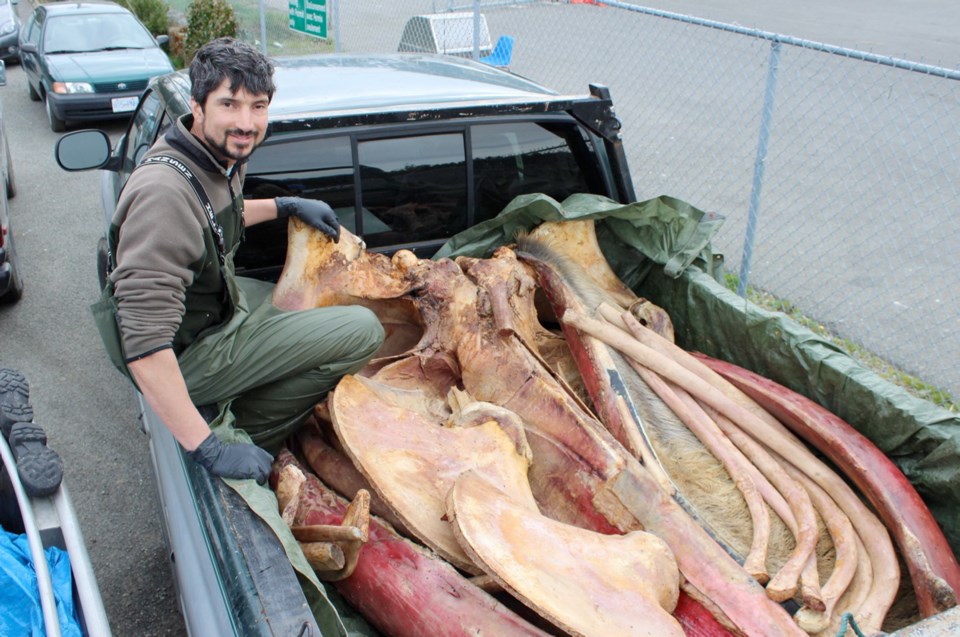A massive skeleton of a young humpback whale found dead at a Tofino-area fish farm last week has been retrieved on behalf of the Royal B.C. Museum.
Nine metres worth of whale bone and seven to nine tonnes of flesh were trucked and ferried to Saltspring Island overnight and will be buried today in horse manure.
That’s the first and major step in cleansing the bones of the oil that makes up 40 per cent of their weight.
“They’re still very stinky and saturated with oil — and that’s one of the trickiest things, to clean the oil out of the skeleton,” said Mike deRoos, owner of Cetacea Contracting. It’s the same company that handled the blue whale skeleton installed at the University of British Columbia in 2010.
Those bones spent time in degreasing tanks at Ellice Recycle on the Inner Harbour.
The year-long composting process removes virtually all of the oil, said deRoos, a biologist who has a two-hectare property for the task.
Assisted by a full-time knife sharpener, nine people worked one day and seven people the next to remove the bones of the two-year-old female humpback, deRoos said.
DeRoos first heard of the dead whale through contacts, then got in touch with the Department of Fisheries and Oceans and notified the Royal B.C. Museum.
Why the whale died is under investigation by Fisheries and Oceans, which would not comment further, other than noting that several dead whales wash up on B.C. shores every year.
DeRoos said it was not known whether the whale died first and was washed into the netting of the remote fish farm or if it became entangled in the netting and drowned.
The museum already has six humpback skeletons, but they’re decades old, said Kelly Sendall, head of collections, care and conservation. This one is in very good condition and valuable for DNA research. “This is a wonderful opportunity — it really does complement our scientific reference collection.”
A gray whale skeleton is already on display in the Imax theatre area of the museum, but it’s not as large as this one. The humpback’s flippers are nearly the size of those found on blue whales — three metres long.
Due to the size and weight of a humpback skeleton, it’s unlikely a real one would be put on display, Sendall said. “It’s too valuable to put on display — it’s more valuable as a research specimen.”
However, the museum is planning a new lobby and whether the new skeleton would play a part remains to be seen.
Another gray whale skeleton has been suspended inside Claremont Secondary School in Saanich since 2001.
Students, volunteers and staff painstakingly cleaned and prepared 200 bones and made replicas of those missing from the skeleton, which had been submerged in Sooke Harbour.



